
Smartphone v. Camera: Which is Better?
Any photographer will tell you that, "the best camera is the one that you'll use." And given the impressive quality of cell phone cameras these days it seems like we're finished here. But wait. Not so fast bunky, you might want to hang in there for a couple more minutes.
First of all -- show of hands. Who of you out there is a pro or semi-pro photographer? Okay, for those of you who just raised your hand, you need to be at the zone system for the digital age seminar in Ballroom C next door. The rest of you, and that's most everyone else, stay put, and we'll talk cameras without all the typical product review jargon.
Let's start with a simple hierarchy of cameras starting from simple to heavy-duty.
Cell phone
Point-and-shoot
Compact
Mirrorless
Digital single lens reflex (DSLR)
With deep photo roots, I've owned everything from this photo chain. Recently, I had an experience that put me in the photog-philosopher mode with a return trip to the dazzling Carlsbad Caverns.
Fifty years ago (Deep breath. . . where does the time go?) I was thirteen years old when my dad and I took the mile long walk down into the caverns. I remember shouldering a large stiff black Vivitar camera bag holding my purchased at Target for $60 East German Praktica SLR along with two Vivitar lenses and a Gold Star flash. I can still see the results of the slides I got back from that trip with half-lit speleological formations and blurry artificial light images. Hey, they may have been crappy, but I was pretty proud that I got anything at all.
So fast forwarding from the AM radio world to the iPod age, my strategy is to have a "pocket-able camera." For this occasion, I tucked my Sony RX100 III into my pocket along with a small flex tripod. Yes, my "No-service-800-feet-below-the-earth" iPhone phone was also with me, but I knew the Sony was going to be my go-to camera.
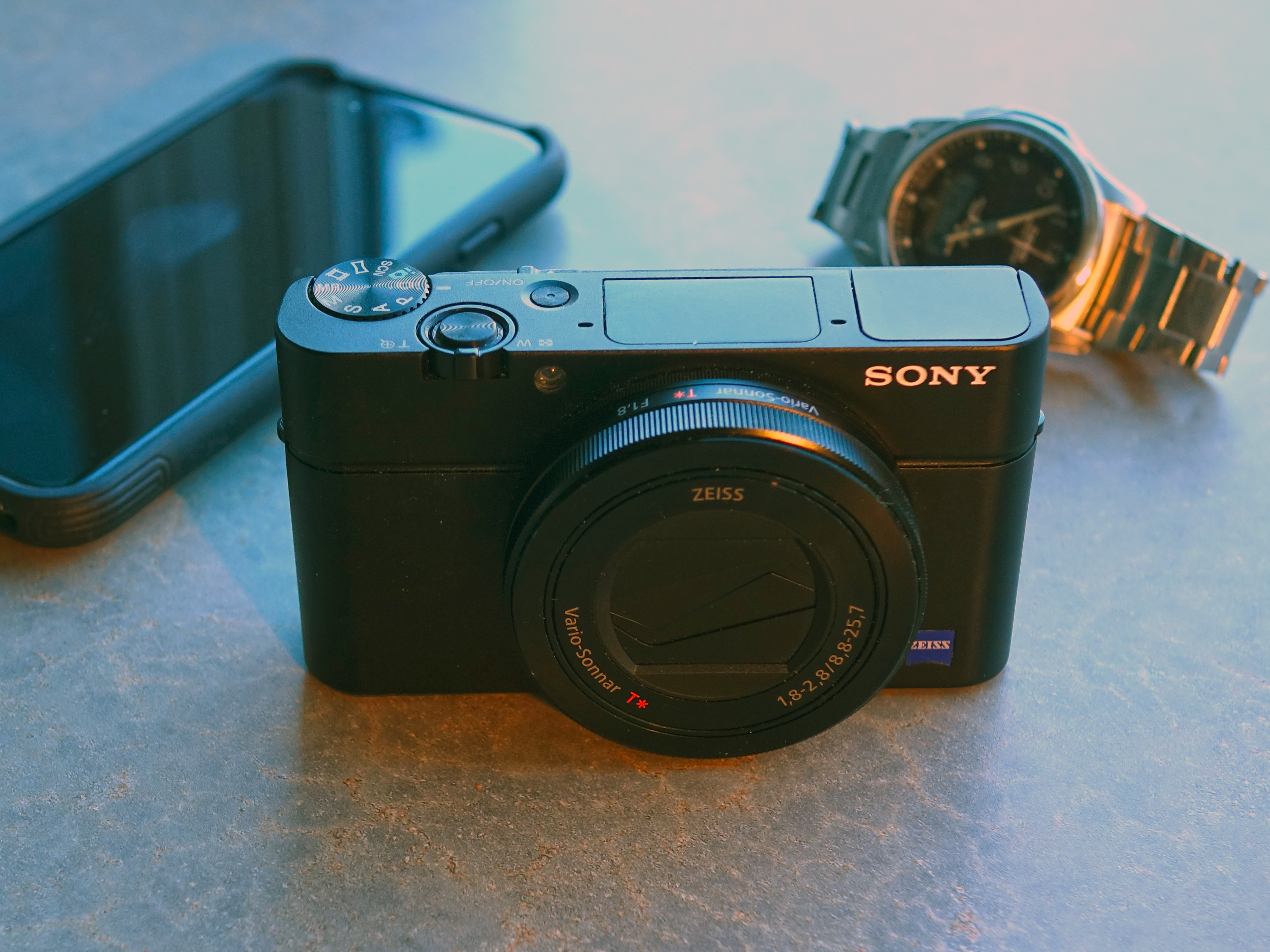 Sony's DSC RX100 series of cameras are a collection of high megapixel wonders. There are five choices in the line ranging from $450-$1,000. DP Review has a good comparison article that you can read here.
Sony's DSC RX100 series of cameras are a collection of high megapixel wonders. There are five choices in the line ranging from $450-$1,000. DP Review has a good comparison article that you can read here.
I own both the II and the III models with the new top of the line V model having some amazing autofocus abilities. All of these cameras have limited optical zoom capabilities that take you from wide angle to very mild telephoto (best for portraits). Unlike the $200 point and shoots the RX family offers more intelligent shooting modes and manual overrides. And with professional-quality lenses and super-high megapixels, they take exceptionally high-quality pictures.
These days Sony and Canon seem to be the two brands duking it out the compact camera arena, and though I've been a happy Canon owner over the years, I think Sony has edged ahead in both features and quality. I've also met more and more pro photographers who have left the traditional Canon and Nikon camps for Sony products. And based on my experience, I can see why.
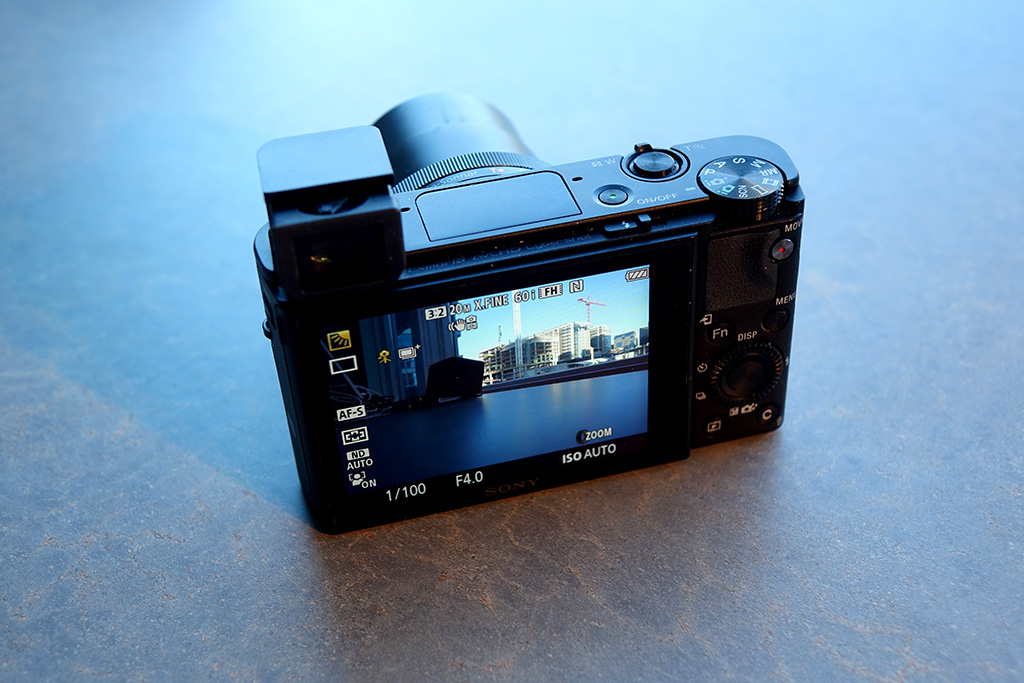 One awesome feature of the III, IV, and V models is the small, but usable pop-up electronic viewfinder (EVF). I have found this enormously helpful when shooting outside in bright light where the sun obliterates the rear panel screen. Additionally, for aging eyes that need reading glasses, using the EVF can make focusing and composing your subject easier.
One awesome feature of the III, IV, and V models is the small, but usable pop-up electronic viewfinder (EVF). I have found this enormously helpful when shooting outside in bright light where the sun obliterates the rear panel screen. Additionally, for aging eyes that need reading glasses, using the EVF can make focusing and composing your subject easier.
Three powerful features of the Sony RX cameras separate it from cell phones.
#1 Photo quality. The electronics, imaging sensor and better optics all add up to getting a higher quality image than a cell phone. Where this becomes important is when you want to find the best picture -- in your picture. In other words being able to crop a photo and still hold quality.
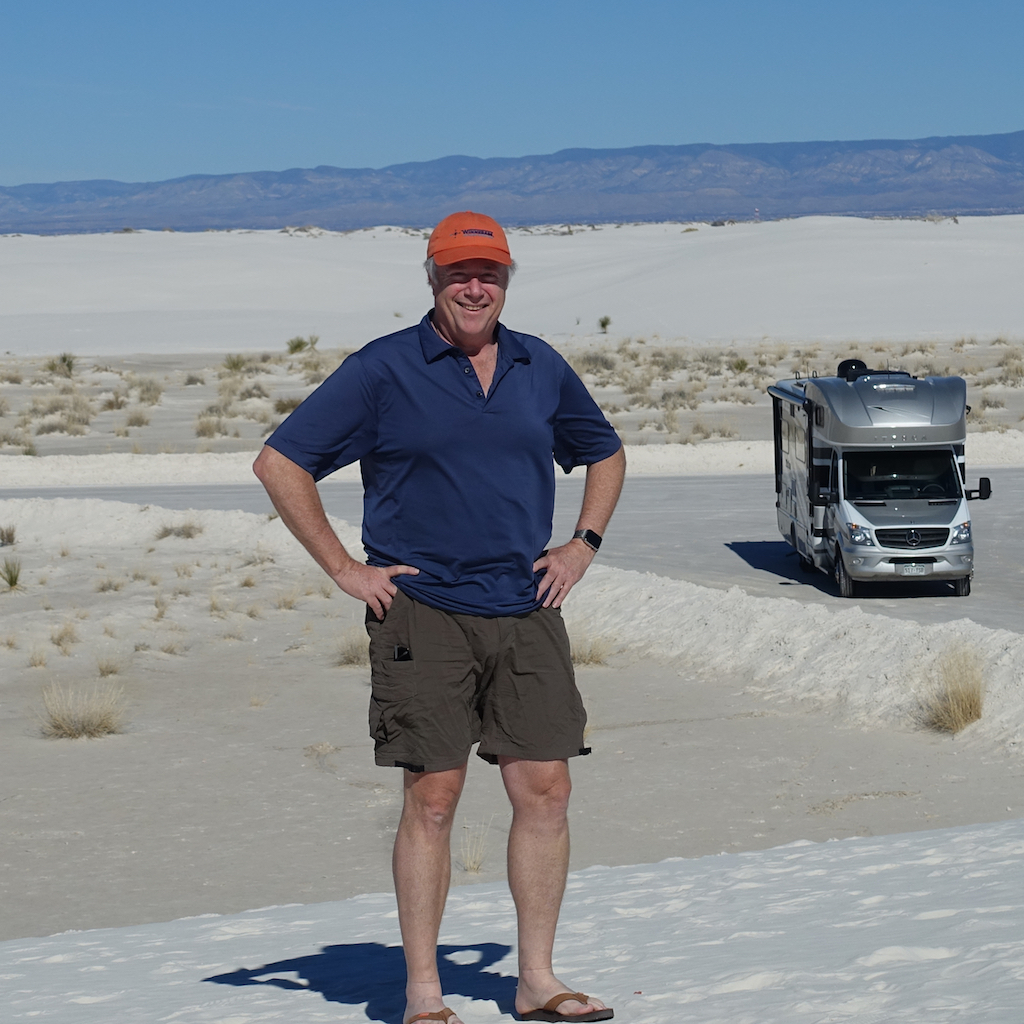 On our latest trip here's some images from White Sands of our Navion.
On our latest trip here's some images from White Sands of our Navion.
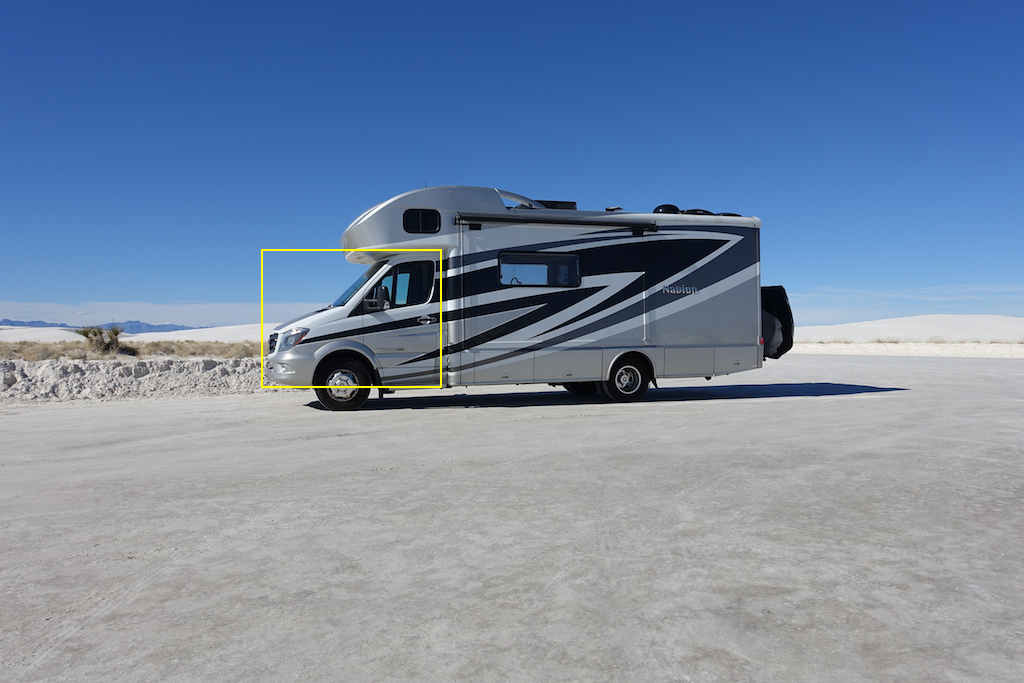
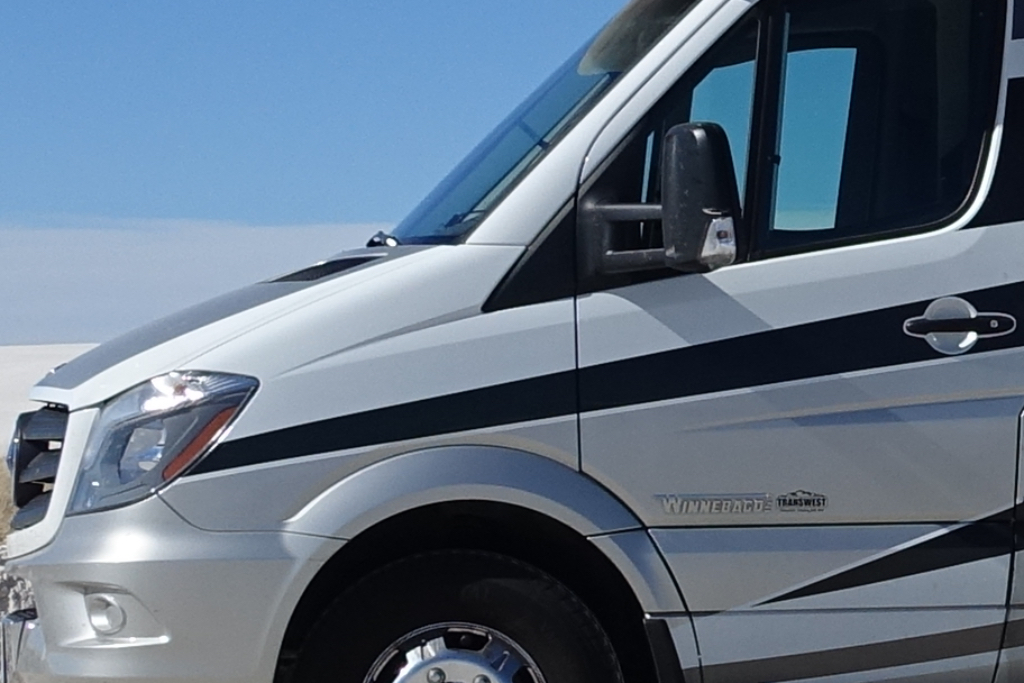 In Photoshop I zoomed in 150% to enlarge a detail. Something a cell phone just can't do.
In Photoshop I zoomed in 150% to enlarge a detail. Something a cell phone just can't do.
#2 Exposure control. Even with 3rd party mobile apps, the electronic smarts packed into the RX cameras pretty much assures you of a good image no matter the situation. Where the camera excels hands down is image stabilization in low light. I've captured some amazing handheld photos with the Sony in "Superior" mode that never would have been sharp on my iPhone.
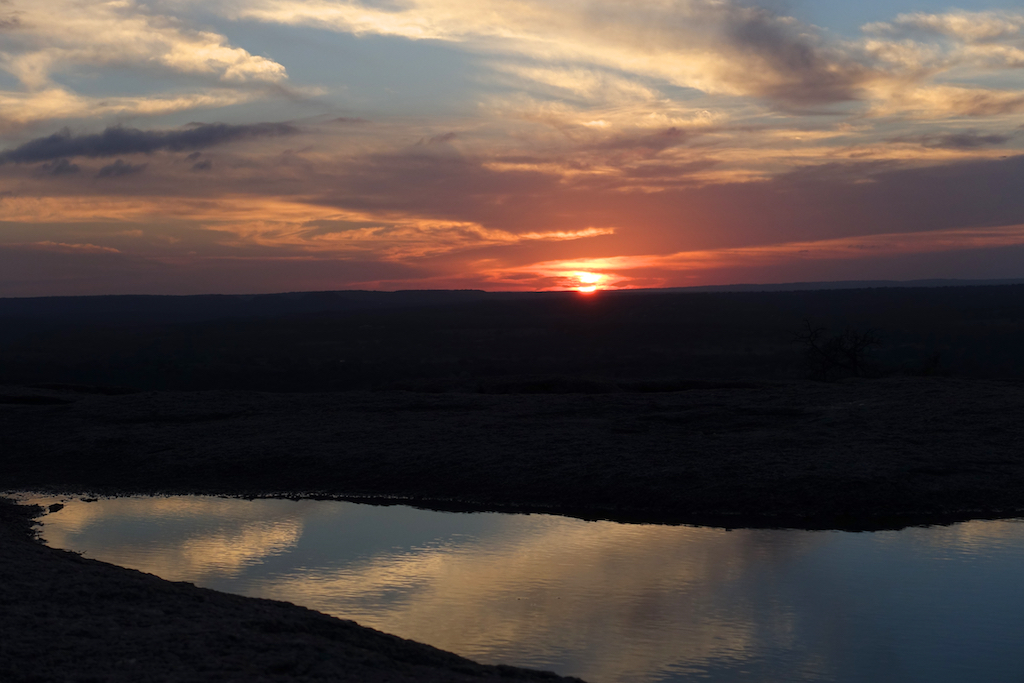 Sunsets can be surprisingly tricky, but the Sony does an excellent job analyzing the scene atop Enchanted Rock in Fredericksburg, Texas.
Sunsets can be surprisingly tricky, but the Sony does an excellent job analyzing the scene atop Enchanted Rock in Fredericksburg, Texas.
#3 Zoom lens. Using the optical zoom affords you much better quality than the software zoom on a phone which does nothing but enlarge pixels.
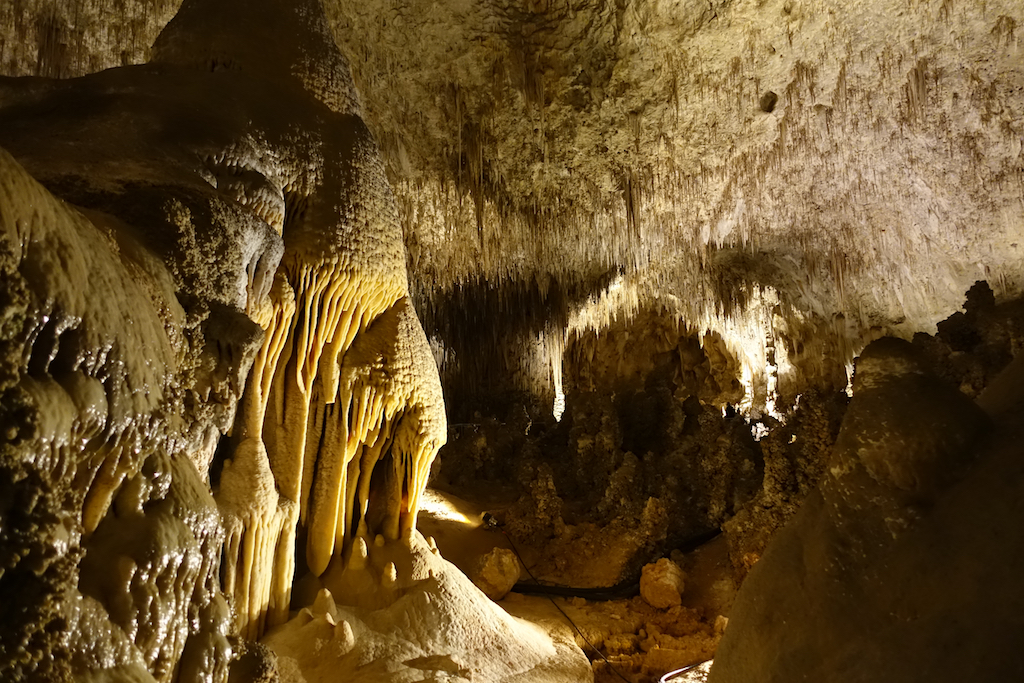 As we toured through the Carlsbad Caverns, the majority of people taking pictures were doing so with their phones. Folks with digital cameras were clicking away with their flashes creating little lightning storms around particularly interesting features. I learned fifty years ago that flash photography in caves doesn't yield excellent results. The key to getting good cave photography is slow exposures using the existing artificial lighting in the cave. I would occasionally stop to use my mini flexible tripod and brace for some very slow exposures with the RX 100. And in this instantaneous digital world, I could immediately check the results and zoom into the displayed image to make sure things were in focus. Sooo much better than waiting for the heartbreak moment at the grocery store photo counter (especially when you got back double prints of everything that turned out bad).
As we toured through the Carlsbad Caverns, the majority of people taking pictures were doing so with their phones. Folks with digital cameras were clicking away with their flashes creating little lightning storms around particularly interesting features. I learned fifty years ago that flash photography in caves doesn't yield excellent results. The key to getting good cave photography is slow exposures using the existing artificial lighting in the cave. I would occasionally stop to use my mini flexible tripod and brace for some very slow exposures with the RX 100. And in this instantaneous digital world, I could immediately check the results and zoom into the displayed image to make sure things were in focus. Sooo much better than waiting for the heartbreak moment at the grocery store photo counter (especially when you got back double prints of everything that turned out bad).
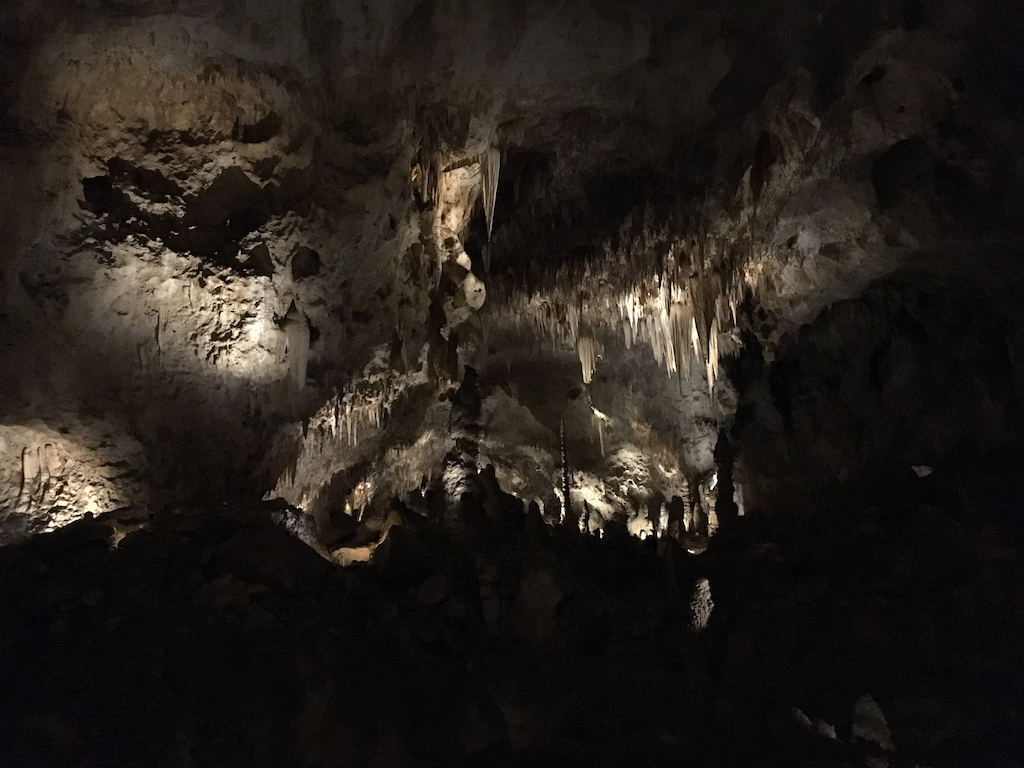 Phone cameras do have their limits. As a comparison, here's a fairly decent shot taken with my iPhone 6s.
Phone cameras do have their limits. As a comparison, here's a fairly decent shot taken with my iPhone 6s.
And here are several photos from the RX100. C'mon, that's not even a contest!
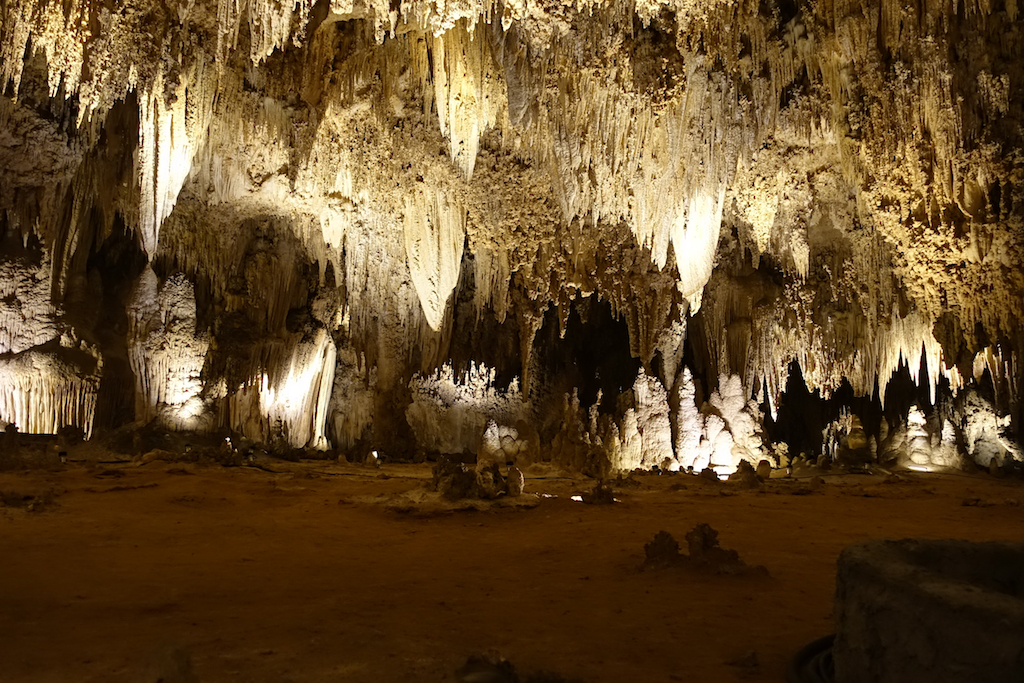
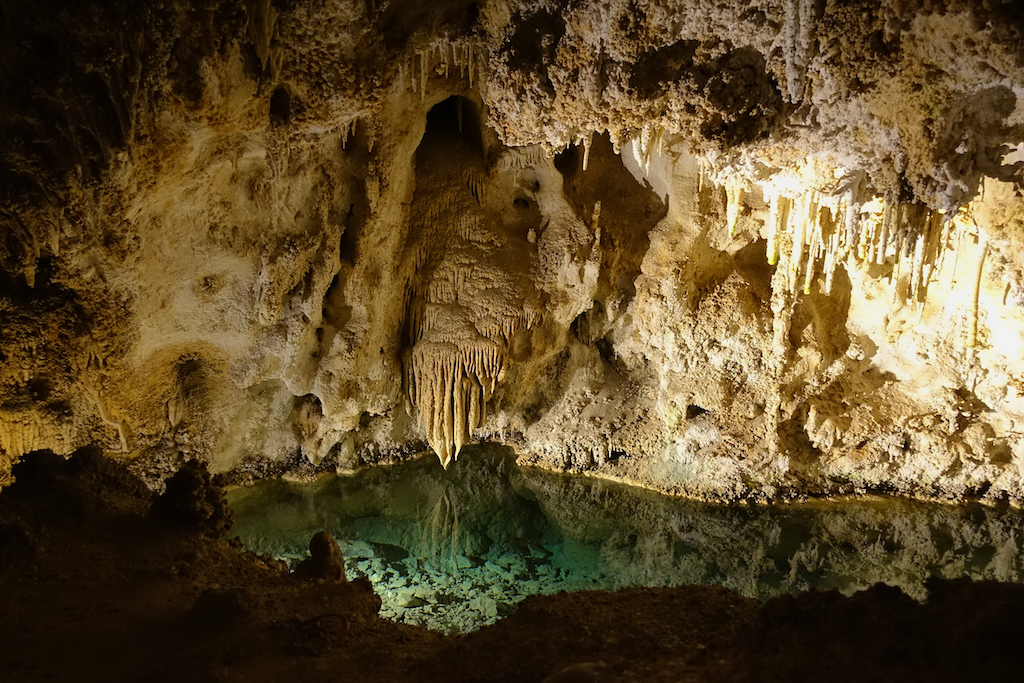 There are times I do like having an even larger camera and more lens flexibility, and there are times that my phone was my only camera for grabbing a great shot. Last year in Paris, on our first-afternoon walk I just wasn't in the mood to take my larger Sony, so I popped the RX100 in my pocket. What you can't tell in this article is how impressive the quality of the images are. Looking at these on my 27" iMac Retina display or our 60" living room TV drives home the point.
There are times I do like having an even larger camera and more lens flexibility, and there are times that my phone was my only camera for grabbing a great shot. Last year in Paris, on our first-afternoon walk I just wasn't in the mood to take my larger Sony, so I popped the RX100 in my pocket. What you can't tell in this article is how impressive the quality of the images are. Looking at these on my 27" iMac Retina display or our 60" living room TV drives home the point.
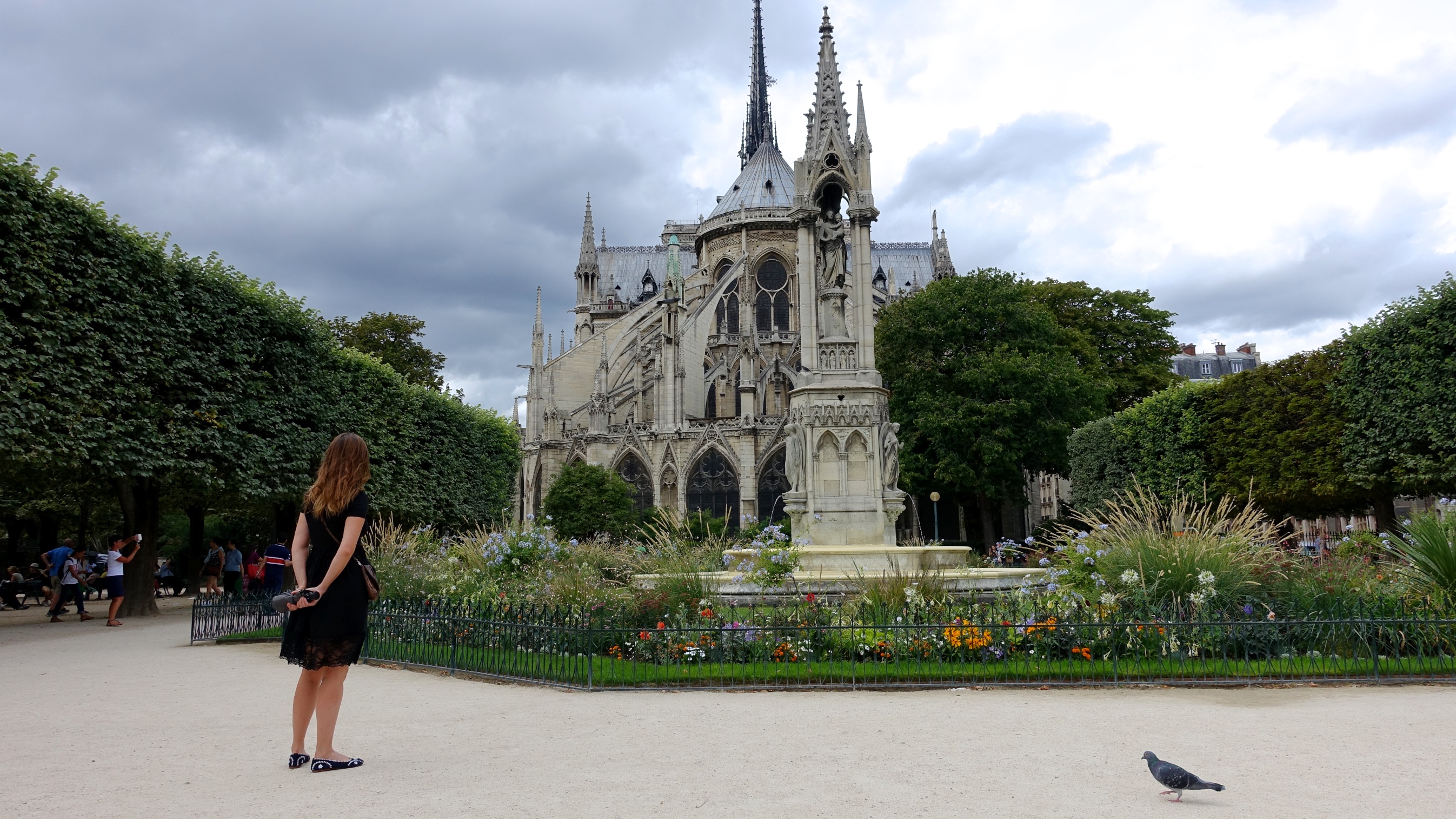 Walk around to the back of Notre Dame, and you avoid all the crowds and lines of young Chinese couples in wedding apparel having five-minute wedding photos taken.
Walk around to the back of Notre Dame, and you avoid all the crowds and lines of young Chinese couples in wedding apparel having five-minute wedding photos taken.
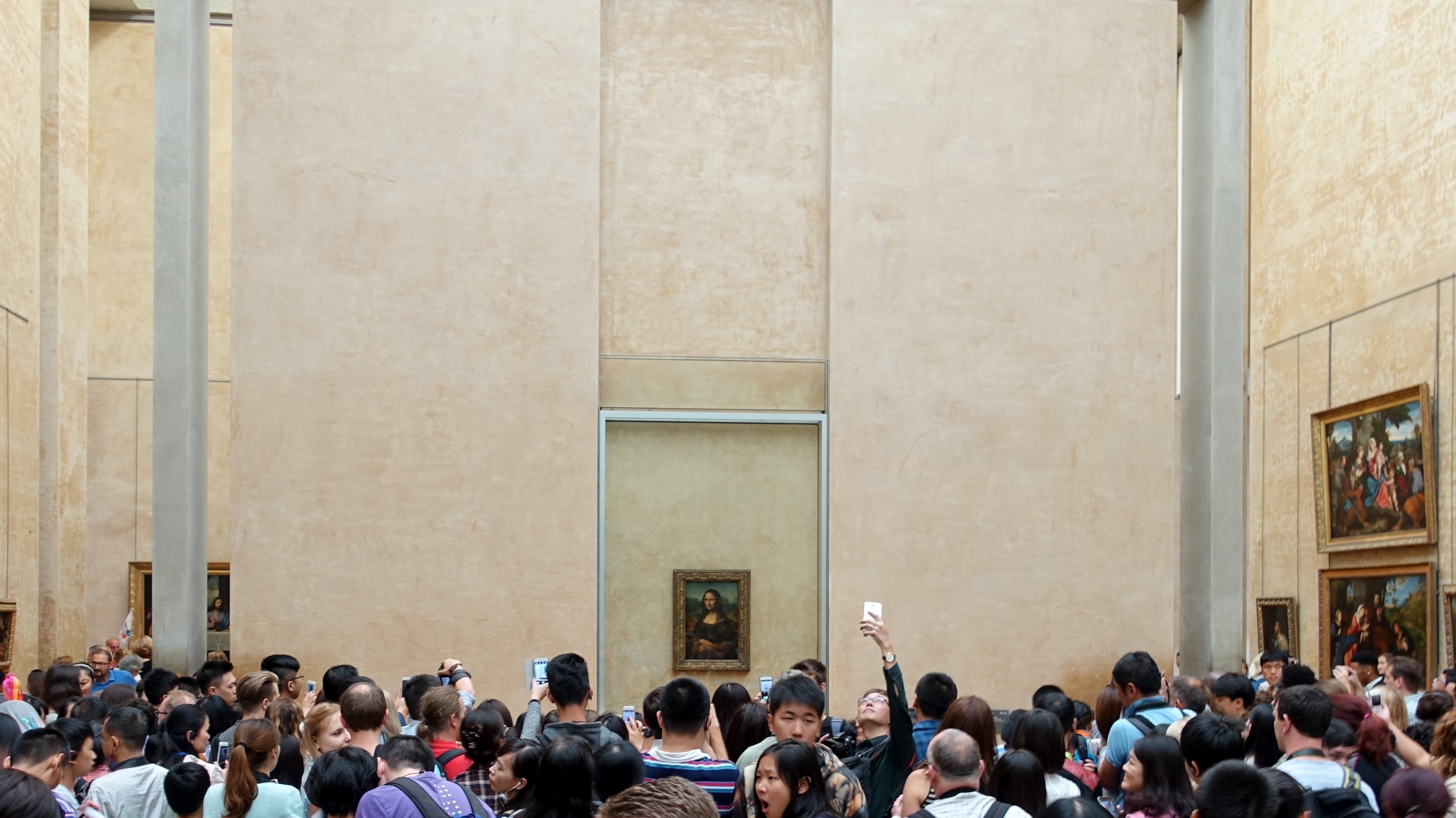 A view of Mona. Lots and lots of tourists around a tiny little painting. Another fantastic portrait painted by DaVinci around the same time hung nearly unnoticed in the adjacent gallery.
A view of Mona. Lots and lots of tourists around a tiny little painting. Another fantastic portrait painted by DaVinci around the same time hung nearly unnoticed in the adjacent gallery.
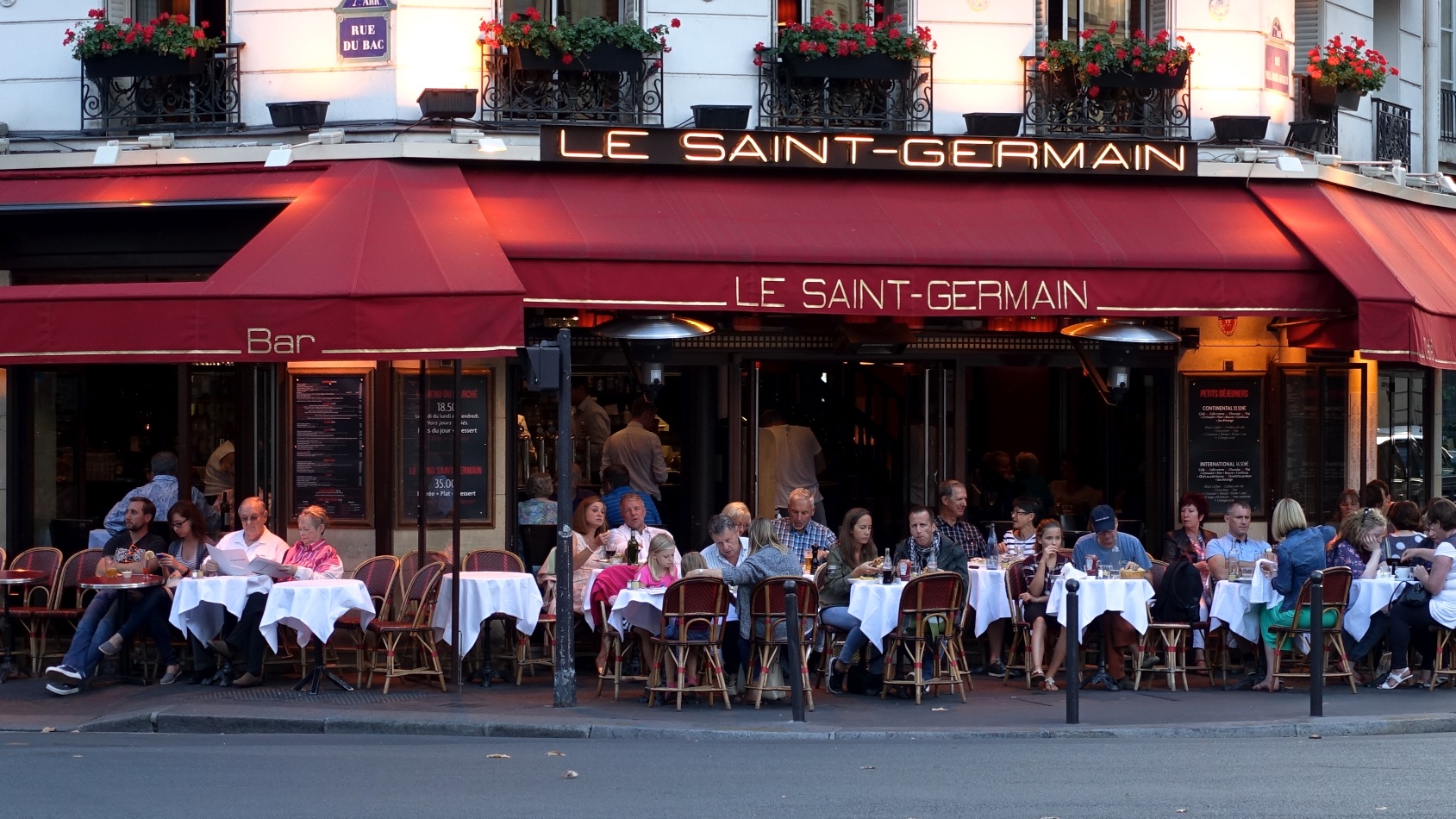 Not only was this cafe photo-worthy, but it became our top choice for a couple of local evening meals.
Not only was this cafe photo-worthy, but it became our top choice for a couple of local evening meals.
In Paris, I did something sort of dumb-smart. I tossed the RX and its case in the hotel safe the next day as I was using my larger Sony. It wasn't until we were in Dusseldorf that I realized that I'd just left a $700 camera in the safe. Grrrrrrr. We called the hotel in Paris who checked and said that the camera wasn't in the safe. Okay, that was the dumb part. The smart part came when we were in Tuscany, and I got an e-mail from a guy in Nova Scotia. He had stayed in the room after us, found the camera and would mail it back to me when they returned home in a few weeks. And here was the smart part -- he contacted me because I had slipped one of my business cards in the case. Now that's a photo tip you can believe in -- pretty amazing!
While Sony has a great selection of affordable point and shoot models, the RX100 family is the one to consider when you're looking for top quality and creative control, but want to travel with a minimal amount of gear and weight. Yup, my iPhone is always handy to have around, but the RX100 is definitely the one to have for the "money shot."
I started with a saying, so let's end with one,"The right tool for the right job." True that for my powerful little Sony traveler.
Comments
Comments on this post are moderated, so they will not appear instantly. All relevant questions and helpful notes are welcome! If you have a service inquiry or question related to your RV, please reach out to the customer care team directly using the phone numbers or contact form on this page .